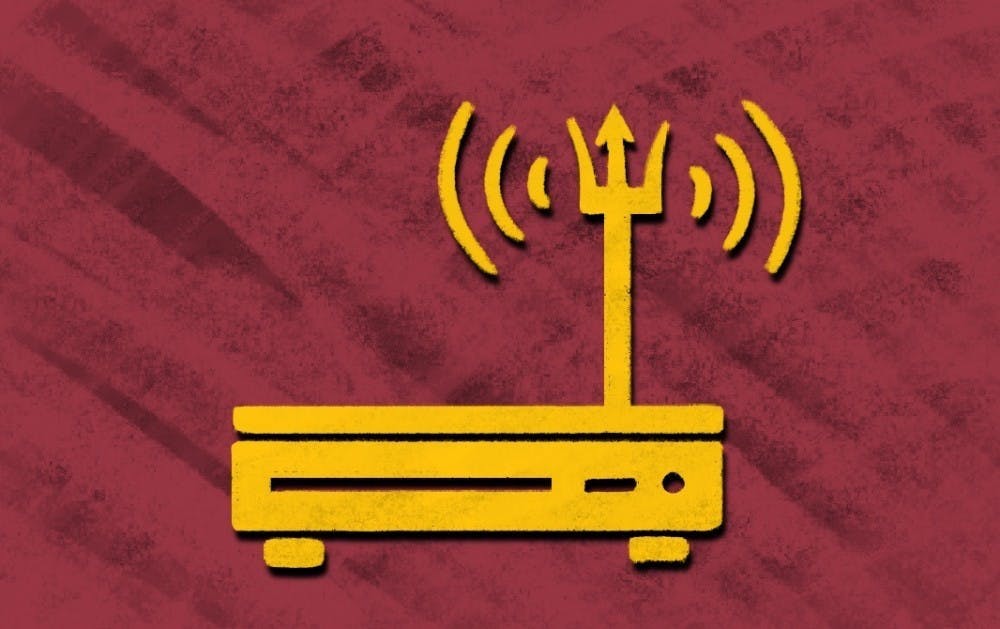An ASU professor and his team are attempting to increase the capability of millimeter wave communication systems by using machine learning.
Millimeter wave communication systems becoming more efficient is a promising advancement in the wireless communication industry, but some challenges remain in realizing its full potential of transmitting more data, like high-quality video over a shorter period of time.
Millimeter waves are electromagnetic waves that work at a very high frequency and are optimal for allowing emerging 5G networks to transmit large data packets with minimal interruptions.
Verizon invested in millimeter waves, saying that the technology would allow large amounts of information to move along the spectrum immediately, once research has enhanced its ability to travel long distances.
Millimeter waves would allow carriers to transmit data speeds much faster than is currently possible with 4G, including downloading high capacity items such as movies in seconds.
“The problem with (millimeter waves) is that its signals travel shorter distances, covering a park in New York but not a broad swath of the city, for example. It also has trouble penetrating obstacles like walls,” according to the New York Times.
Ira A. Fulton School of Engineering assistant professor Ahmed Alkhateeb and his team of Ph.D., master’s and undergraduate students have developed a framework to help solve these challenges.
Millimeter waves have short wavelengths and rely heavily on line of sight connection, meaning obstructions like vehicles, buildings or people can block the signal, making connections less reliable.
Alkhateeb and his team have developed ViWi-BT, a vision-wireless beam tracking framework used to enhance the reliability of millimeter wave communications and help realize its full potential.
The team has used simulations modeled after real world scenarios, like a downtown setting, and collected wireless and visual data samples to potentially enable the use of machine learning to predict future efficient beam directions, according to a report published by the researchers.
By joining wireless and visual data, which Alkhateeb’s group calls vision-aided wireless communications, predicting future beams using previous beam sequences and video frames will become more practical in real world scenarios.
The team is optimistic for the future of wireless technology as long as research continues to be done to advance it.
“I believe that combining visual information with wireless information will be revolutionary in the field of communication,” Jayden Booth, a master’s electrical engineering student working on the project, said.
In order to facilitate further research, Alkhateeb is setting up an online machine learning competition with a chance of being invited to the International Conference on Communications to compete in a live demonstration.
Teams are able to register to participate in an initial competition where they will design machine learning algorithms that use video frames and previous beams to predict the directions of future beams for millimeter wave base stations, which are typically positioned on lampposts.
Each submission will be given a score and those with the highest scores will be invited to a live demonstration at the ICC Machine Learning for Communications Workshop, according to the competition’s website.
Exploring machine learning is essential to progress outside of just millimeter wave communications, as it is a mainstay in other technologies like artificial intelligence and autonomous vehicles.
“Machine learning is a core component to many AI systems, and technologies like autonomous vehicles breathe AI,” Muhammad Alrabeiah, a Ph.D. student working on the project, said.
The recent emergence of different modes of technology across all spectrums has given Alrabeiah belief that advancements within the scopes of machine learning and AI can influence many aspects of modern life.
“I believe machine learning, and artificial intelligence in general, is the key to overcome not only the beam selection issue, but also other challenges,” said Alrabeiah.
Research being done by the team, as well as the competition recently launched, can create real change, both with wireless communication and other technologically related topics, Andrew Hredzak, an undergraduate student working on the project, said.
“With the competition that we just released, combining wireless communication and the millimeter wave vision, we think it is going to be very powerful,” Hredzak said.
Reach the reporter at baharr21@asu.edu or follow @brady_harris2 on Twitter.
Like The State Press on Facebook and follow @statepress on Twitter.




